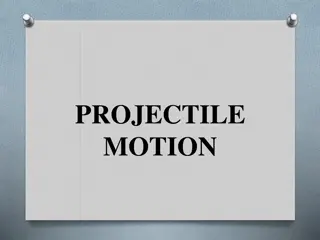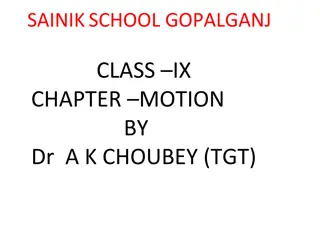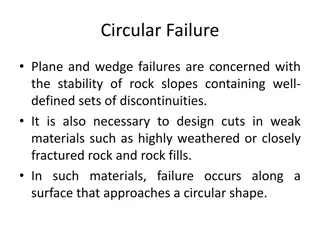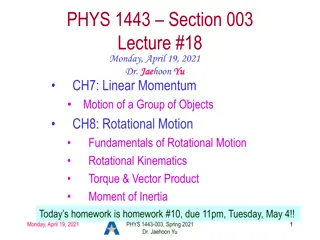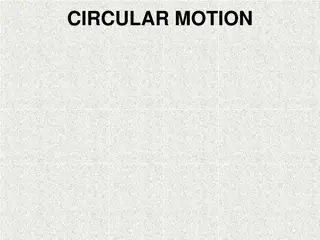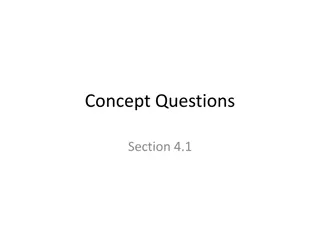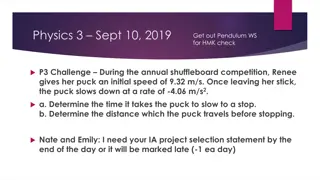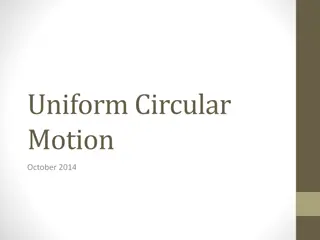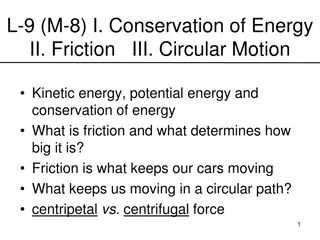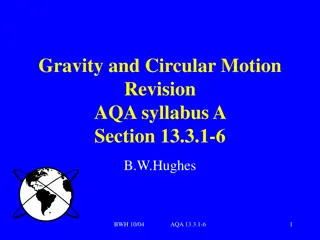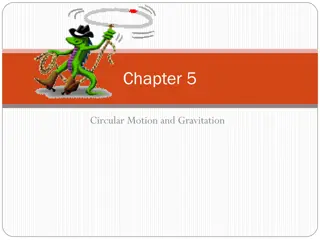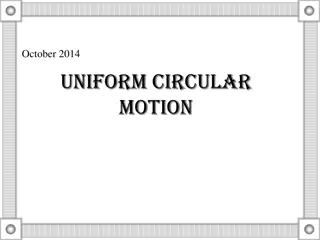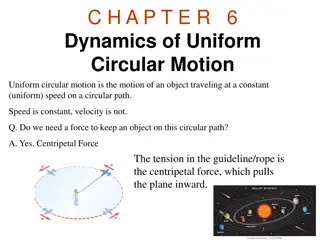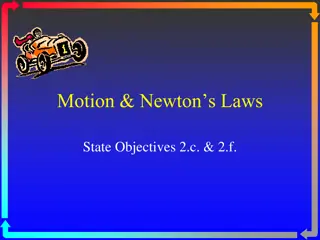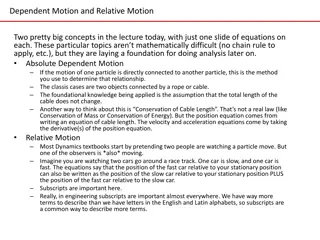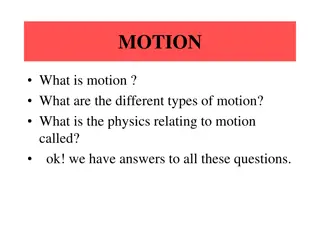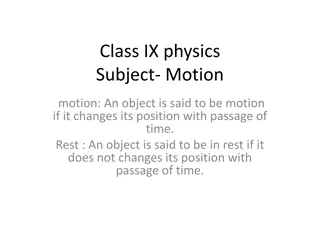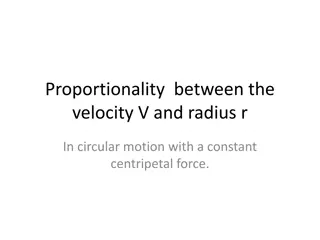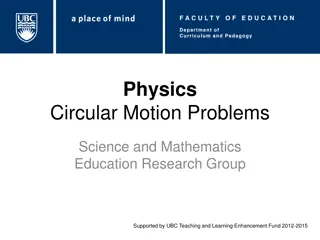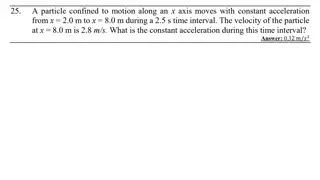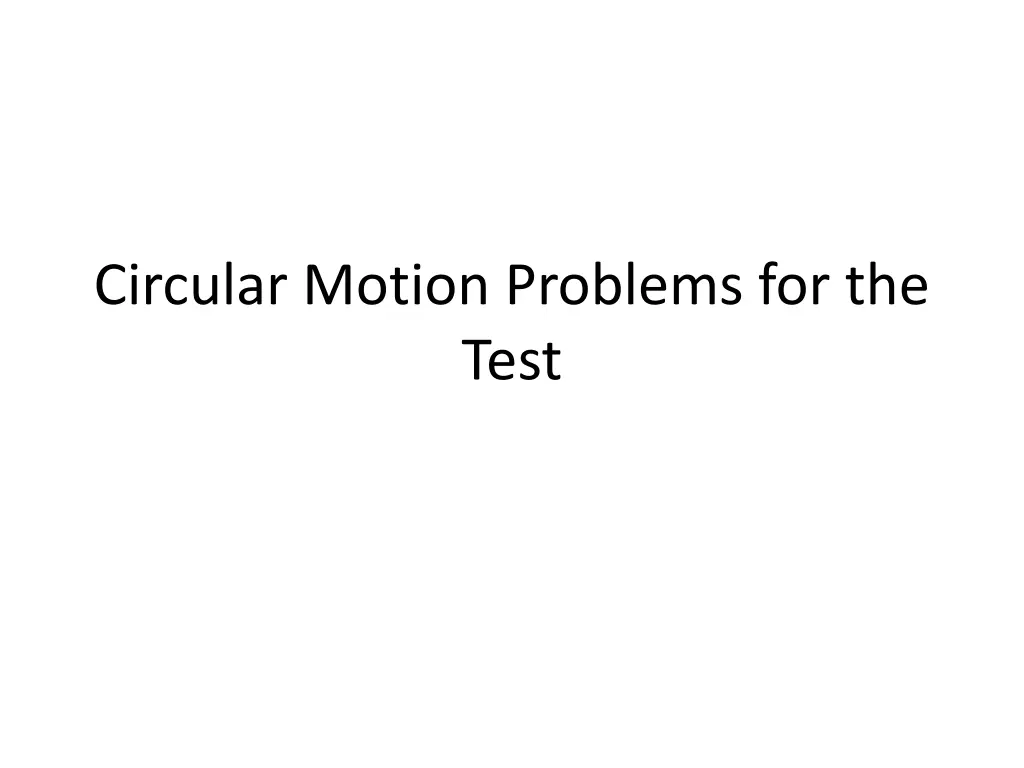
Circular Motion Problems for Test Preparation
Practice solving circular motion problems for upcoming exams with detailed equations, formulas, and examples. Learn how to calculate velocity, acceleration, centripetal force, and more in circular motion scenarios.
Download Presentation

Please find below an Image/Link to download the presentation.
The content on the website is provided AS IS for your information and personal use only. It may not be sold, licensed, or shared on other websites without obtaining consent from the author. If you encounter any issues during the download, it is possible that the publisher has removed the file from their server.
You are allowed to download the files provided on this website for personal or commercial use, subject to the condition that they are used lawfully. All files are the property of their respective owners.
The content on the website is provided AS IS for your information and personal use only. It may not be sold, licensed, or shared on other websites without obtaining consent from the author.
E N D
Presentation Transcript
Copy down these formulas Equations: v= 2 r/T ac= v2/r ac = 4 2r/T2 Fc= mac Fc= mv2/r Fc = m4 2r/T2 T= 1/f
Copy down these abbreviations v for velocity (m/s) acfor centripetal acceleration (m/s2) r for radius (m) T for period (s) Fcfor centripetal force (N) m for mass (kg) f for frequency (Hz or 1/s)
When calculating the period, remember it is the number of seconds ONE rotation or revolution takes. If a ball, tied to a string, is being swung in a circle- what is the period if the ball experiences 120 revolutions per minute?
A 615-kg racing car completes one lap in 14.3 seconds around a circular track with a radius of 50.0 m. Calculate- A. acceleration B. Force C. What acts as the centripetal force? .
A coin is placed on a stereo record making 33 revolutions per minute. A. In what direction is the force acting? B. What is the acceleration of the coin when placed 0.05, 0.10, and 0.15 m from the center of the record? C. What force accelerates the coin? D. In which of the three radii listed above is the coin most likely to fly off?
A 40-kg kid rides on a merry-go- round 1.5 m from the center. The merry-go-round makes one complete rotation every 1.2 seconds. A. What is the velocity of the kid? B. What is the acceleration of the kid? C. What is the magnitude of the force acting on the kid? D. In what direction is the force acting?
Essential questions for the test: When traveling in a circle, What direction is the net force, acceleration, and velocity?

